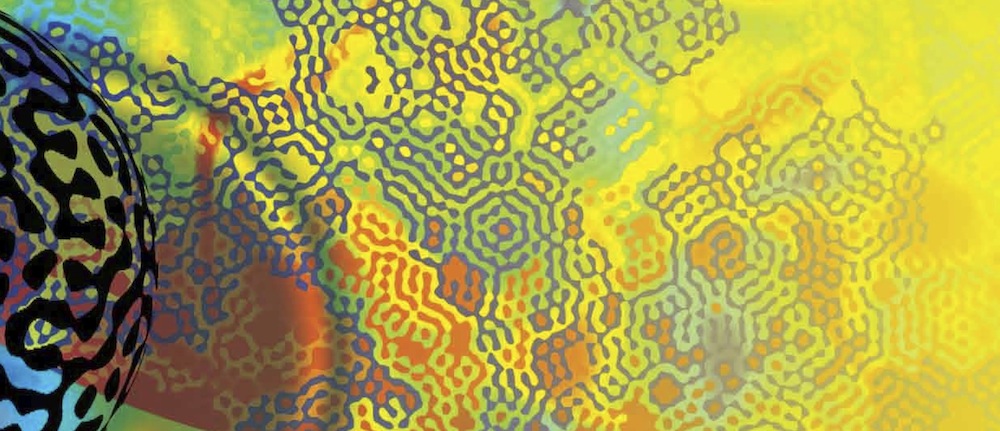
Le regroupement d'analyse est affilié au laboratoire d'analyse mathématique du CRM qui organise un grand nombre d'événements scientifiques. Les intérêts de recherche des membres du groupe peuvent être classifiés grosso modo sous les rubriques suivantes :
Ce programme vise à initier les étudiants et les étudiantes à la recherche en analyse, en allant de l’analyse classique à l’analyse moderne, avec des applications à des domaines tels la géométrie, la physique mathématique, la théorie des nombres et la statistique.
Il est très important que les étudiants et étudiantes qui s’intéressent au programme d’analyse suivent une des séries de cours d’introduction à l’analyse qui suivent. Ces cours donnent la préparation nécessaire pour les cours plus avancés offerts dans le cadre du programme.
The course is devoted to the theory of unbounded operators in Hilbert spaces. The main themes are extensions of symmetric operators and criteria of self-adjointness, proofs of the spectral theorem for unbounded operators, applications to PDE. As an additional topic I am planning to include some versions of the adiabatic theorem for time-dependent Hamiltonians and elements of Berry phase theory.
Review of theory of measure and integration; product measures, Fubini's theorem; Lp spaces; basic principles of Banach spaces; Riesz representation theorem for C(X); Hilbert spaces; part of the material of MATH 565 may be covered as well.
Classification and wellposedness of linear and nonlinear partial differential equations; energy methods; Dirichlet principle. Brief introduction to distributions; weak derivatives. Fundamental solutions and Green's functions for Poisson equation, regularity, harmonic functions, maximum principle. Representation formulae for solutions of heat and wave equations, Duhamel's principle. Method of Characteristics, scalar conservation laws, shocks.
The main topic will be geometric inequalities, e.g., isoperimetric type inequalities. We will discuss the roles of elliptic and parabolic PDEs in solving this kind of problems, like Alexandrov-Bakelmann-Pucci estimates, optimal transportation, and other tools in analysis and geometric analysis.
Ensembles mesurables, mesure de Lebesgue, théorèmes de Lusin et de Egorov, intégrale de Lebesgue, théorème de Fubini, espaces Lp, éléments de la théorie ergodique, mesure et dimension de Hausdorff, ensembles fractals.
Espaces d’Hilbert, de Banach, théorèmes de Hahn-Banach, de Banach-Steinhaus et du graphe fermé, topologies faibles, espaces réflexifs, décomposition spectrale des opérateurs auto-adjoints compacts.
Espaces de Hilbert, espaces de Banach, algèbres de Banach. Étude particulière de l'algèbre des opérateurs sur un espace de Hilbert. Espace de Banach des fonctions à variation bornée et intégrale de Stieltjes. Fonctionnelles linéaires. Théorème de représentation de Riesz. Théorèmes de Hahn-Banach, de la borne uniforme et du graphe fermé. Topologies faibles. Convexité : théorèmes de séparation, inégalité de Jensen, théorème de Krein-Milman.
The course will introduce students to the theory of classical harmonic analysis: convergence of Fourier series on the circle; Fourier transforms on the line and in Euclidean space; the Schwartz space and tempered distributions; and the Poisson Summation Formula. It will also cover applications to PDE; applications to sampling theory; the discrete Fourier transform and Fast Fourier Transform; wavelets and frames.
Students will be able to choose further topics from theoretical or applied harmonic analysis to pursue in individual projects/presentations.
Linear and quasilinear 1-st order equations. Transport equation. Shock waves and rarefactions. D'Alembert solution to the one-dimensional wave equation. Infinite, semiinfinite and finite string. Separation of variables, Fourier method for the 1-d wave equation. Solution of the wave equation in 2-d and 3-d. Duhamel formula. Energy method, finite speed of propagation. Laplace and Poisson equations in 2-d and 3-d. Green's formula. Hydrodynamical interpretation. Properties of harmonic functions. Maximum principle, mean value theorem, Liouville and Harnack's theorems. Dirichlet's and Neumann's problems for the Laplace equation. Variational method. Heat equation. Solution in the whole space. Energy method for the proof of existence and uniqueness of solution.
Measure and integration, measure spaces, convergence theorems, Radon-Nikodem theorem, measure and outer measure, extension theorem, product measures, Hausdorf measure, LP-spaces, Riesz theorem, bounded linear functionals on C(X), conditional expectations and martingales.
Formes différentielles dans l'espace euclidien. Variétés différentielles. Intégration de formes différentielles, théorème de Stokes, applications.
Continuation of topics from MATH 564. Signed measures, Hahn and Jordan decompositions. Radon-Nikodym theorems, complex measures, differentiation in Rn, Fourier series and integrals, additional topics.
L'objectif du concours est de présenter les notions principales de résolution des équations aux dérivées partielles (EDP). Dans ce cours, nous présentons les sujets suivants :
EDP non linéaires du premier ordre. Solutions à l'aide de la méthode de Monge (description analytique du cône de Monge et le ruban caractéristique). Intégration complète et le crochet de Jacobi (méthode de Charpit et méthode de Jacobi), Méthode de Lagrange pour les équations de Hamilton-Jacobi.
EDP du deuxième ordre hyperbolique, elliptique et parabolique. Classification des EDP du second ordre par la méthode de Beltrami, Théorème d'existence des solutions et théorème de Cauchi-Kowaleska, Intégrale intermédiaire pour les équations linéaires de type hyperbolique, Résolution par la méthode de cascade de Laplace, Méthode d'intégration de Riemann, Problème de Sturm-Liouville et polynômes orthogonaux, Méthode de la moyenne sphérique, Méthode d'Hadamard et le principe de Duhamel, Fonction de Green et solution fondamentale.
Système quasilinéaire du premier ordre. Solution de rang 1 (ondes de Riemann), Superposition des ondes de Riemann (Solution de rang k>1), Systèmes en involution, Estimé du degré de liberté d'une solution au sens de Cartan.